Xiaobo Huang
Steps Adaptive Decay DPSGD: Enhancing Performance on Imbalanced Datasets with Differential Privacy with HAM10000
Jul 09, 2025Abstract:When applying machine learning to medical image classification, data leakage is a critical issue. Previous methods, such as adding noise to gradients for differential privacy, work well on large datasets like MNIST and CIFAR-100, but fail on small, imbalanced medical datasets like HAM10000. This is because the imbalanced distribution causes gradients from minority classes to be clipped and lose crucial information, while majority classes dominate. This leads the model to fall into suboptimal solutions early. To address this, we propose SAD-DPSGD, which uses a linear decaying mechanism for noise and clipping thresholds. By allocating more privacy budget and using higher clipping thresholds in the initial training phases, the model avoids suboptimal solutions and enhances performance. Experiments show that SAD-DPSGD outperforms Auto-DPSGD on HAM10000, improving accuracy by 2.15% under $\epsilon = 3.0$ , $\delta = 10^{-3}$.
Challenges and Solutions to Build a Data Pipeline to Identify Anomalies in Enterprise System Performance
Dec 13, 2021
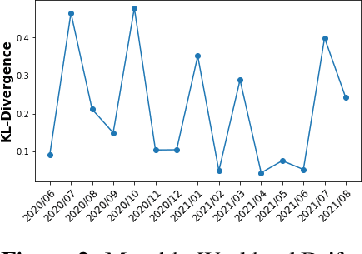

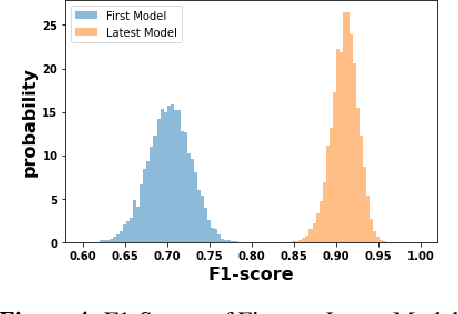
Abstract:We discuss how VMware is solving the following challenges to harness data to operate our ML-based anomaly detection system to detect performance issues in our Software Defined Data Center (SDDC) enterprise deployments: (i) label scarcity and label bias due to heavy dependency on unscalable human annotators, and (ii) data drifts due to ever-changing workload patterns, software stack and underlying hardware. Our anomaly detection system has been deployed in production for many years and has successfully detected numerous major performance issues. We demonstrate that by addressing these data challenges, we not only improve the accuracy of our performance anomaly detection model by 30%, but also ensure that the model performance to never degrade over time.
Confluence of Artificial Intelligence and High Performance Computing for Accelerated, Scalable and Reproducible Gravitational Wave Detection
Dec 15, 2020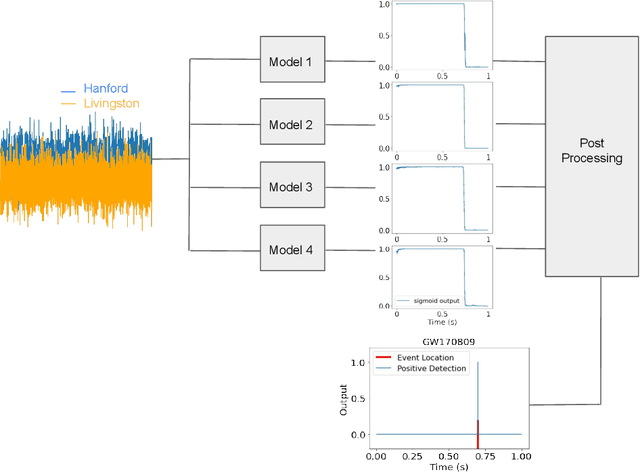
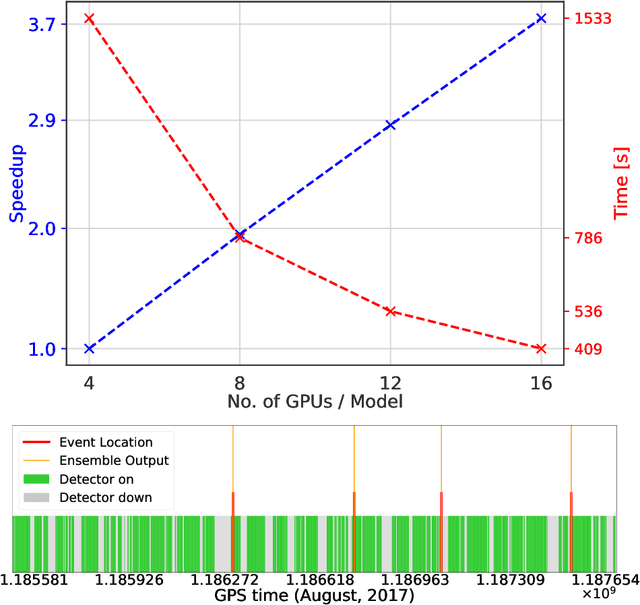
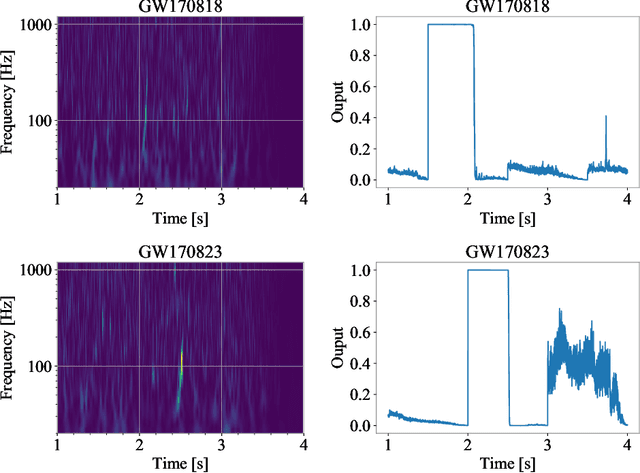

Abstract:Finding new ways to use artificial intelligence (AI) to accelerate the analysis of gravitational wave data, and ensuring the developed models are easily reusable promises to unlock new opportunities in multi-messenger astrophysics (MMA), and to enable wider use, rigorous validation, and sharing of developed models by the community. In this work, we demonstrate how connecting recently deployed DOE and NSF-sponsored cyberinfrastructure allows for new ways to publish models, and to subsequently deploy these models into applications using computing platforms ranging from laptops to high performance computing clusters. We develop a workflow that connects the Data and Learning Hub for Science (DLHub), a repository for publishing machine learning models, with the Hardware Accelerated Learning (HAL) deep learning computing cluster, using funcX as a universal distributed computing service. We then use this workflow to search for binary black hole gravitational wave signals in open source advanced LIGO data. We find that using this workflow, an ensemble of four openly available deep learning models can be run on HAL and process the entire month of August 2017 of advanced LIGO data in just seven minutes, identifying all four binary black hole mergers previously identified in this dataset, and reporting no misclassifications. This approach, which combines advances in AI, distributed computing, and scientific data infrastructure opens new pathways to conduct reproducible, accelerated, data-driven gravitational wave detection.
Convolutional Neural Networks In Convolution
Oct 09, 2018
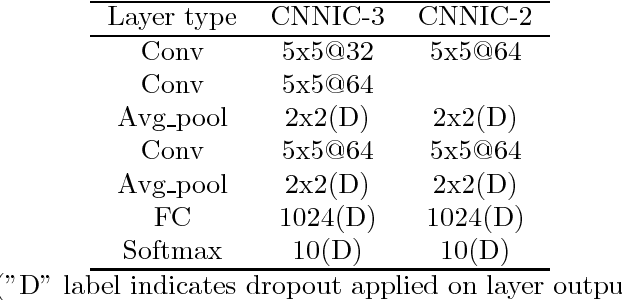
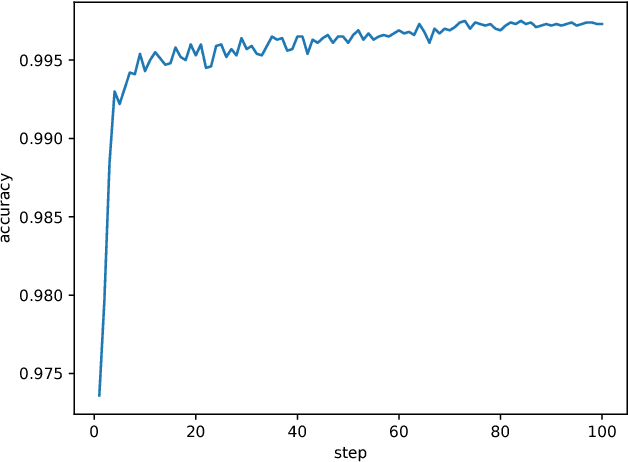
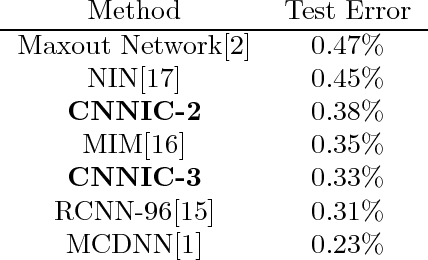
Abstract:Currently, increasingly deeper neural networks have been applied to improve their accuracy. In contrast, We propose a novel wider Convolutional Neural Networks (CNN) architecture, motivated by the Multi-column Deep Neural Networks and the Network In Network(NIN), aiming for higher accuracy without input data transmutation. In our architecture, namely "CNN In Convolution"(CNNIC), a small CNN, instead of the original generalized liner model(GLM) based filters, is convoluted as kernel on the original image, serving as feature extracting layer of this networks. And further classifications are then carried out by a global average pooling layer and a softmax layer. Dropout and orthonormal initialization are applied to overcome training difficulties including slow convergence and over-fitting. Persuasive classification performance is demonstrated on MNIST.
 Add to Chrome
Add to Chrome Add to Firefox
Add to Firefox Add to Edge
Add to Edge